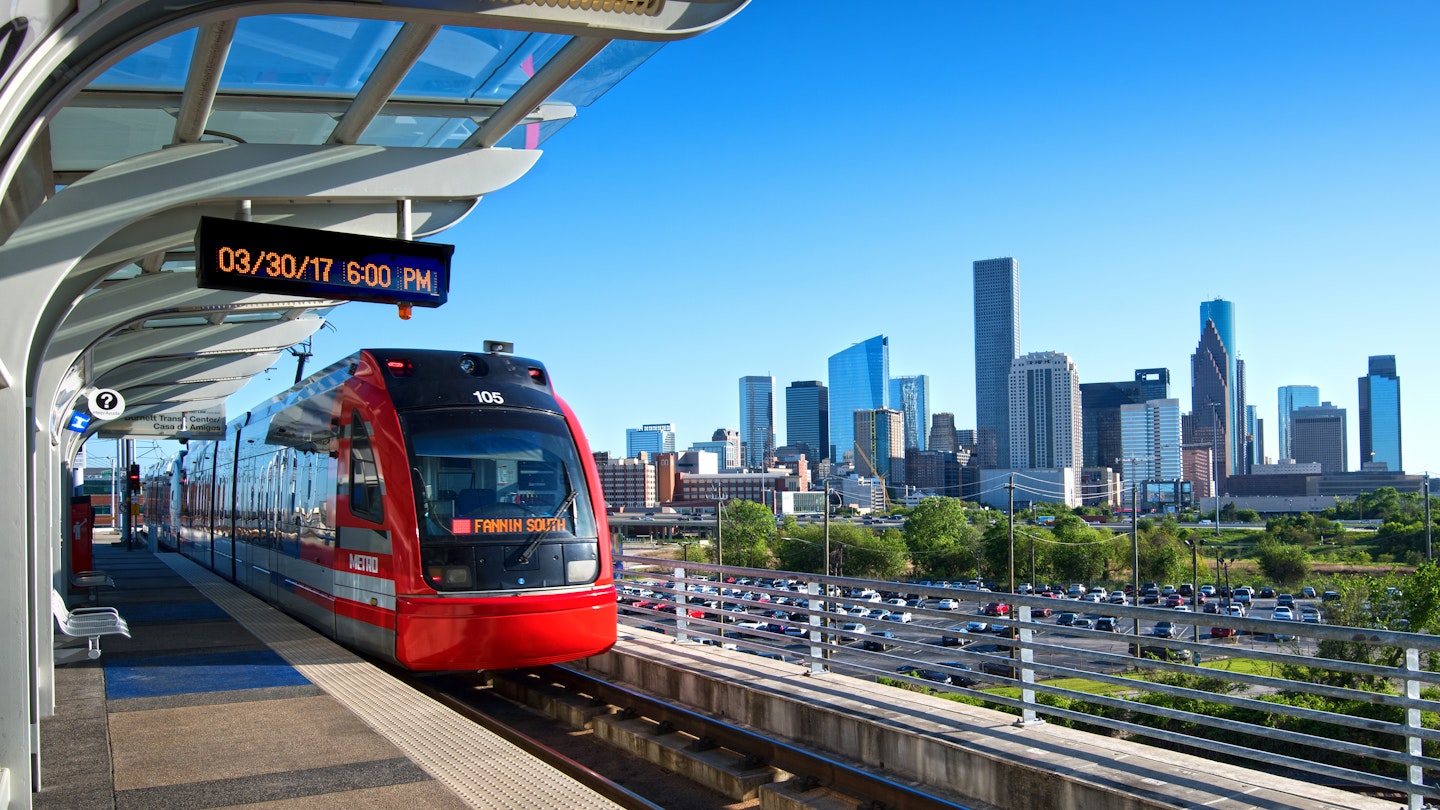Car and Motorcycle
While Houston’s Metrorail system provides a convenient link between downtown and various attractions, it can be challenging for the public transit system to cover the sprawling metro area. To explore beyond essential neighborhoods, having a car is beneficial, or you may need to rely on taxis or rideshares.
Houston’s major highways include Interstate 45, Interstate 10, and U.S. 59. There are several toll roads in the region, such as Texas 225, Hardy Toll Road, Sam Houston Tollway, and the Grand Parkway (Texas 99). You have the option to avoid these tolls, carry cash, or obtain an EZ Tag if you’re staying for a more extended visit.
In the downtown area, metered streetside parking is facilitated by numerous vending machines that sell timed tickets, which are not site-specific. Although parking may be plentiful, it can cost upwards of $25 a day. Outside the downtown area, parking is often free but may be limited.
Parking availability is a priority for many Houstonians when choosing dining locations. Don’t hesitate to utilize valet parking at restaurants and shopping centers; it can often be inexpensive and more convenient than searching for a parking spot.
Public Transit
Despite Houston’s vastness, most attractions for visitors are concentrated north or south of I-59 within a 10-mile radius between the Galleria area and the city center. Public transit planners focus on these key areas, particularly the Museum District and Montrose, but downtown should not be overlooked.
Fares for buses and light rail transit are $1.25 one way, requiring exact change. Alternatively, you can use a METRO Q Fare Card for cashless payment options. These cards are available at grocery stores, gas stations, and convenience stores throughout Houston. Using a fare card or mobile ticketing app provides the added benefit of free three-hour transfers, a service not available for cash payments.
Light Rail
The Metrorail system operates efficiently with three lines: the Red Line, Purple Line, and Green Line. The Red Line serves crucial areas including Reliant Park, the Rice University, Hermann Park, and the Museum District, as well as Midtown and downtown. The Purple Line focuses on southeast Houston, which is rich in Black culture and history, as well as the University of Houston and Texas Southern University. The Green Line connects the Theater District, East End, and downtown.
Bus
Though taking a bus may not be as quick as driving, it does eliminate the hassle of parking, allowing for exploration beyond the tourist districts that the light rail network does not cover. Bus service primarily caters to weekday commuters in downtown, supporting thousands of residents daily. Free Greenlink shuttle buses operate on two routes, connecting major downtown sites, with arrivals every seven to ten minutes.
Taxi and Rideshare
Houston Metro offers diverse taxi companies and rideshare applications. Notably, the city has introduced a flat fare for taxi rides within downtown; any trip within the central business district, framed by Interstate 45, Interstate 10, and U.S. 59, always costs $6.
Bicycle
Houston B-Cycle offers a practical solution for short trips across the city. Locate a B-Cycle station, use your credit card for access, and return the bicycle at other stations. The initial hour is included in the membership fee. Consider downloading the app for comprehensive details.
Accessible Transit in Houston
Houston is committed to accessibility. All buses are equipped with ramps or lifts, and many of them can “kneel” to lower the boarding height for individuals with mobility challenges. The METRORail also adheres to ADA guidelines, featuring audio and visual announcements for those who are Deaf, hard of hearing, or visually impaired. Reserved seating is available on trains for passengers using wheelchairs.
For wheelchair-accessible transport, Yellowcab is the recommended service. They offer low-floor vehicles modified for scooters and wheelchairs, and fares are comparable to typical taxi costs. Additionally, up to three extra passengers can ride without incurring additional charges. Cabs may be arranged via phone, through an app, or online.





